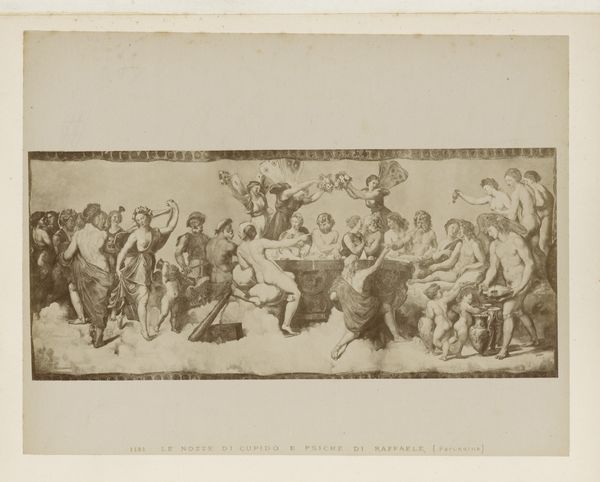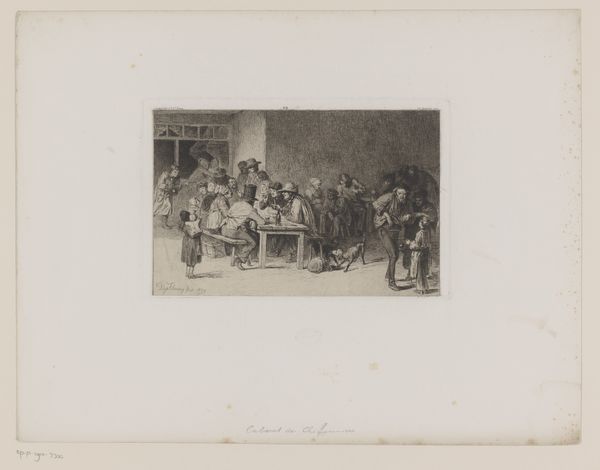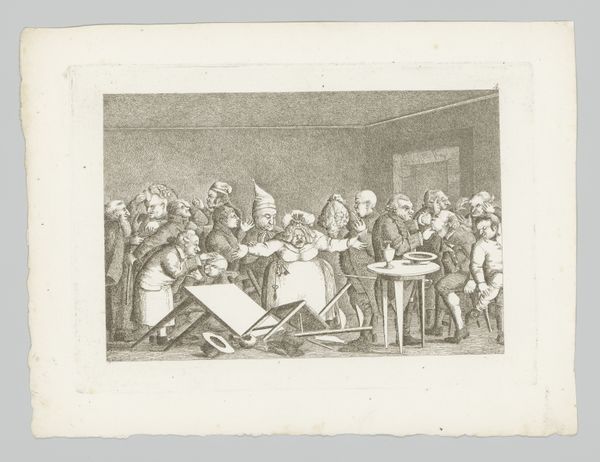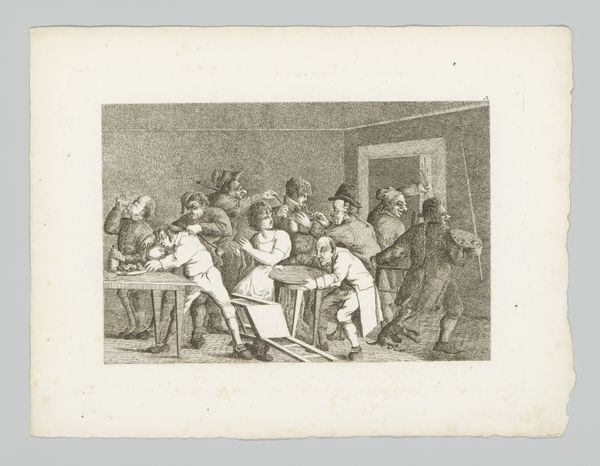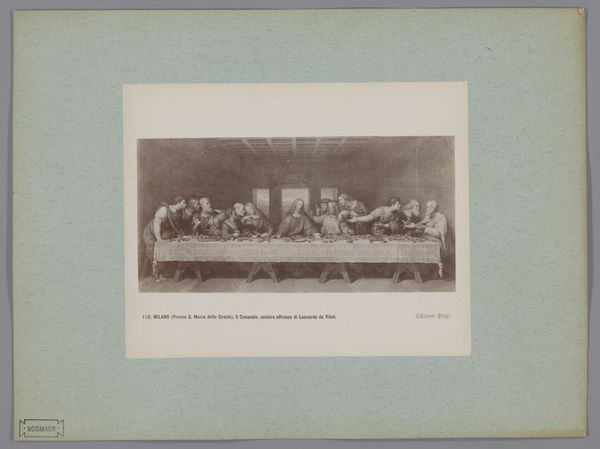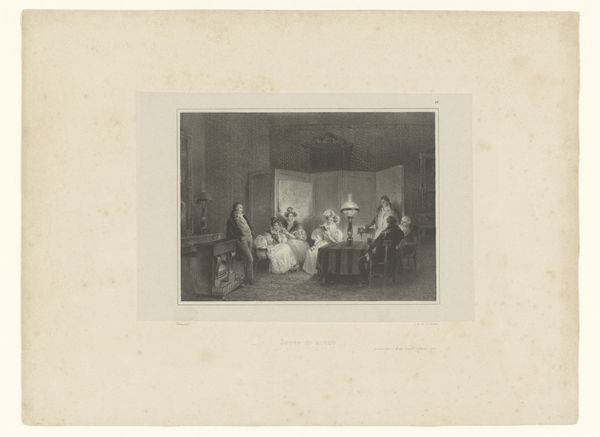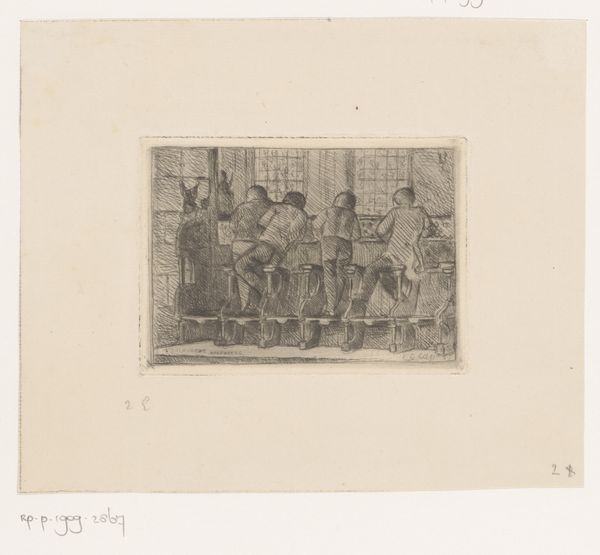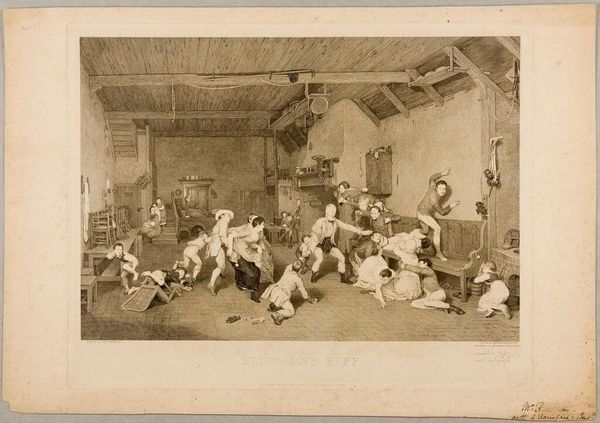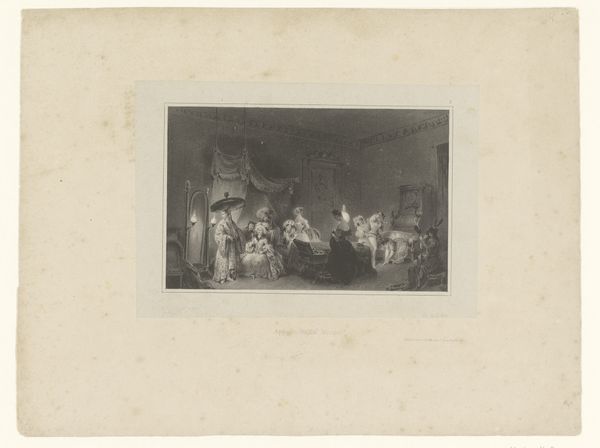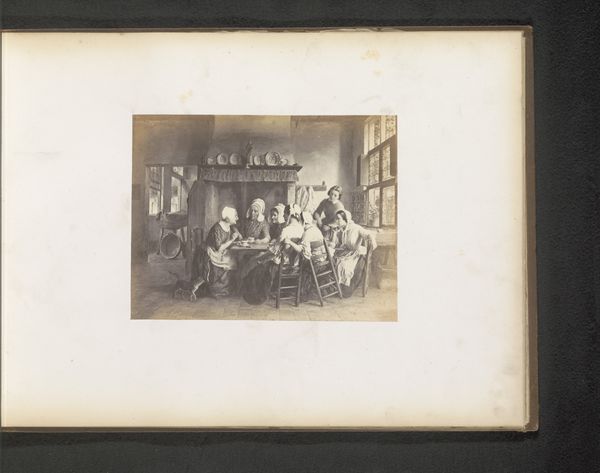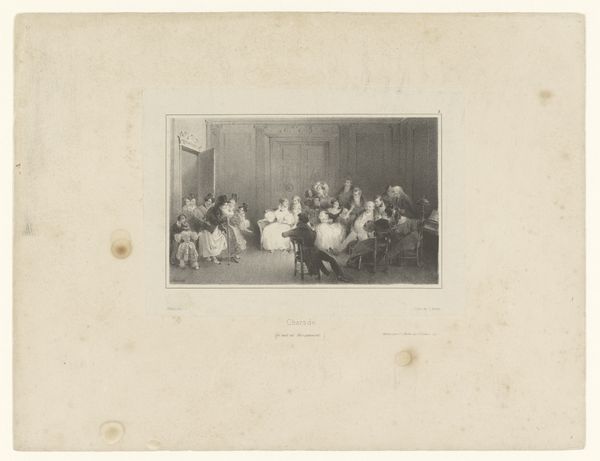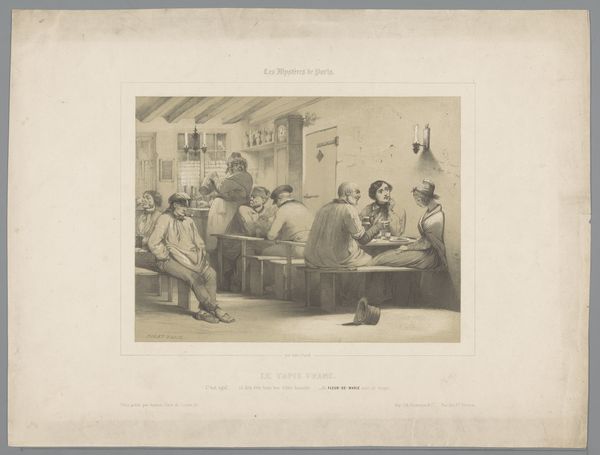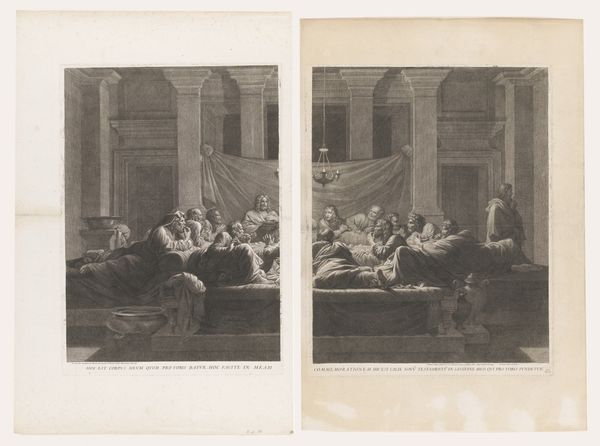
Fotoreproductie van Het laatst avondmaal door Leonardo da Vinci 1850 - 1900
0:00
0:00
print, photography, gelatin-silver-print
#
portrait
# print
#
appropriation
#
figuration
#
11_renaissance
#
photography
#
gelatin-silver-print
#
history-painting
#
academic-art
Dimensions: height 81 mm, width 50 mm
Copyright: Rijks Museum: Open Domain
Curator: Welcome. Before us we have a gelatin silver print, a photographic reproduction of Leonardo da Vinci's iconic "The Last Supper." This particular version was created sometime between 1850 and 1900 by Fratelli Alinari. Editor: It feels like a whisper of the Renaissance. A hushed retelling of a well-known story, almost ghostlike in its monochrome palette. Curator: Indeed. The Alinari brothers were masters of art reproduction, helping to disseminate artistic treasures across Europe. Consider the power of this technology to spread images to wider audiences. Editor: Absolutely, it's about democratization but also about control. Who gets to see, and how, often reinforces existing hierarchies. How did they frame this image to serve the Church, the state, or perhaps, a burgeoning tourist industry? Curator: The Alinari's were, for the most part, documenting Italian art, architecture, and culture. Photography afforded them accuracy and consistency—things increasingly valued by art historical study. The piece is clearly "Academic art," emulating that traditional aesthetic through a modern medium. Editor: The historical context is very important. Think of the rise of photography, colonialism, and shifting religious landscapes. Did this image, intentionally or not, reinforce certain power structures? Who was in control of the gaze? Who benefited from its circulation? Curator: That's an interesting perspective. Photography introduced a new form of documentation. This print isn't trying to offer commentary; it’s offering access. Da Vinci’s original was already centuries old. Here’s an attempt at preserving it. Editor: Preservation for whom, though? Whose story gets told, and how? Even the act of copying, framing, and disseminating involves a viewpoint. This photograph serves not only as documentation, but as another form of interpretation. Curator: It's remarkable to see how techniques evolved and how art endures across different media. The Alinari Brothers captured something of that Renaissance genius. Editor: A potent reminder that art isn't just created; it's constantly being reshaped, reinterpreted, and redeployed to communicate different values in society. Food for thought indeed!
Comments
No comments
Be the first to comment and join the conversation on the ultimate creative platform.
